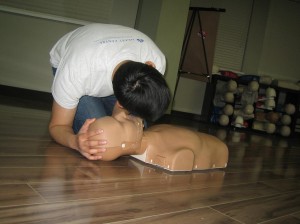All throughout the US, the most popular healthcare training program has been cardiopulmonary resuscitation for the past several years. When CPR training was first introduced, the classes were primarily monopolized by people who worked in healthcare. Today, now that there is raised awareness regarding the importance of being trained in CPR and first aid and Basic Life Support (BLS), people from different occupations and even stay-at-home parents take basic CPR training lessons. More complicated programs for healthcare providers are available as well.
If you want to enroll in any of our training providers, you can visit the websites and use the application form to sign up. Applications are also accepted through e-mail or over the telephone. Enrolment in person is highly encouraged by our staff members since certain details regarding enrolment will need to be finalized in person.
Certification/credentials
All of the programs we offer trainees are certification courses. Once all the lessons are finished, students have to take a set of post-tests, a practical and a written test, that they need to pass. Trainees who are able to pass the post-test are awarded a training certificate. Certificates are valid for two years only; rescuers can choose to renew them as they approach expiration through a re-certification program. Expired certificates are not honored for re-certification.
Take note, that not all of our programs have available re-certification; in that case, the training program will have to be taken again to receive a new certificate.

Training courses offered
Training courses at our providers fall under one of two categories: (1) Basic Life Support and (2) Advanced Life Support. Basic Life Support programs introduce trainees to basic CPR skills, specifically chest compressions, rescue breaths, and defibrillation. A few first aid skills are also included in BLS training. The basic CPR programs teach one-person CPR rescue while BLS for healthcare providers teaches one-person and two-person CPR rescue.
On the other hand, Advanced Life Support programs teach trainees management of cardiac arrest in a clinical setup with equipment and medication. CPR in a hospital setting is different, with the use of endotracheal tubes, bag valve masks, manual defibrillators, and medication making cardiac arrest management must easier.
Basic Life Support (BLS)
- Heartsaver CPR and AED – This runs for four hours, teaching one-person CPR rescue, automated external defibrillation (AED), and first aid to the general public. The post-test for certification given at the end of the program is optional.
- Heartsaver CPR and AED (C) – This program tailors the general public program for healthcare providers. It runs for four and a half hours.
- Basic Life Support (BLS) for HCPs – This is a healthcare provider program that teaches both one-person and two-person CPR rescue to trainees. It also teaches them about the Basic Life Support (BLS) guidelines from the American Heart Association. Basic Life Support (BLS) from the AHA serves as a guideline in giving CPR to manage cardiac arrest. The program is also four and a half hours long.
Advanced Life Support
- Advanced Cardiac Life Support – This program focuses on the management of cardiac arrest of adult victims. It runs for 16 hours over two days. Re-certification is five to six hours.
- Pediatric Life Support – While the curriculum and basics of the program are the same as ACLS, this focuses on the management of pediatric victims. It runs for 14 hours over two days. Re-certification is six to eight hours.
